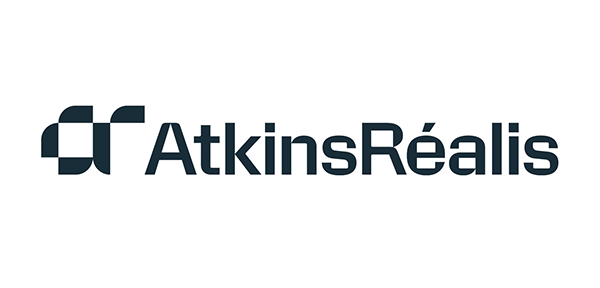Geospatial platform delivers Biodiversity Net Gain and huge cost savings for the construction industry
Infrastructure renewal and growth are vital to economic and societal growth and, thanks to new methodologies, biodiversity enhancement can sit parallel to these aims. The AtkinsRéalis SpatialCDE platform (or Spatial Common Data Environment) uses a technology stack including Esri to deliver huge qualitative and quantitative benefits while supporting Biodiversity Net Gain.
More efficient data collection and management saves each project £300,000 per annum
Quickly developed custom tools deliver £40,000 in cost savings per quarter, per tool
A 1000 per cent increase in Biodiversity Net Gain is projected thanks to use of this technique on one project
The Challenge
Biodiversity Net Gain (BNG) strategies have been introduced to mitigate against the impact of construction projects, and the Environment Act 2021 makes BNG mandatory for all but small sites with Environmental Impact Assessments (EIA). However, the legislated requirements can be complex and time consuming. The process is constantly changing, and it can be difficult for developers and their partners to keep pace.
AtkinsRéalis’ Geospatial team observed that, at any one point, there could be up to 500 people working on large development projects such as a road design or rail construction, and every individual team member requires the most accurate, up-to-date data. This could be within a single large multidisciplinary organisation or spread across multiple contractors. And the specialties required use vastly different techniques, terminology and task plans; an ecologist surveying badger setts for instance, versus a civil engineer considering the curve of a junction. Offering the same centrally managed data to all is a challenge, but also an opportunity for enhanced collaboration, and development of innovative methods such as BNG analytics.
When designing its SpatialCDE in 2015, AtkinsRéalis identified the opportunity for major process improvements; what was required was a standardised, geospatial approach to improve workflows, bring context to reporting and increase collaboration across all the contractors on any one project. The development of a common SpatialCDE techstack has enabled design and roll-out of multiple tools, frequently utilitising the ArcGIS python powered widgets within interactive WebApps.
“Our Spatial CDE system gives colleagues an incredibly rich user experience. ArcGIS puts data in the real world and enables us to make significant process improvements while delivering impressive cost and resource savings.”
Elspeth McIntyre, Geospatial Associate Director, AtkinsRéalis
The Solution
AtkinsRéalis knew that the ArcGIS System offered the versatility it required to create an integrated digital geospatial platform and data system. The resultant AtkinsRéalis SpatialCDE (Spatial Common Data Environment) combines spatial analysis techniques with qualitative assessments, enabling a broad range of specialists working on any one construction project to share data, insights and knowledge.
Field workflows are now streamlined with ArcGIS Field Maps, which is downloadable to any mobile device. Ecologists use map-driven mobile forms to capture different assets and observations to complete their work efficiently and accurately. Data is automatically uploaded to the AtkinsRéalis SpatialCDE and, where there is no reliable data connection, they can continue to work offline.
Portal for ArcGIS allows users across a complex project to access the AtkinsRéalis SpatialCDE with a simple log-in and, with its gallery of spatial apps including Map Viewer and ArcGIS Dashboards, view and analyse data collected in 2D and 3D. A custom integration of FME and Microsoft Azure enables the data management toolbox used to manage both primary data collection, and data collated from other sources such as the Environment Agency. The whole platform is aligned with ISO 19650 and is BIM Level 2 compliant.
Flexibility is another important requirement for the AtkinsRéalis team. The FME server back end allows the team to update any legislative changes or project requirements. Using ArcGIS Python libraries, the team can build custom tools quickly and easily, vital for new Environmental Risk Assessments, and for Bio Net Gain. These can now be spun up in a matter of hours, rather than the weeks previously taken.
AtkinsRéalis initially integrated Esri’s ArcGIS System into the SpatialCDE in Europe in 2021. Since then, access has been widened to Canada and the USA, as well as to colleagues in the Middle East, and plans include extending the Spatial CDE to teams in the Asia Pacific region.
“A geospatial approach via the AtkinsRéalis SpatialCDE is vital to make construction projects more efficient while driving Biodiversity Net Gain. We all have a responsibility to protect our Natural Capital and mitigate against the impact of economic and societal growth.”
Harriet McQuade, Geospatial Business Lead, AtkinsRéalis
Benefits
Tangible cost and time savings
More efficient workflows and vastly improved data management is saving projects in the region of £300,000 per annum. Ecologists spend less time collecting data and have their time freed up to explore new processes and deliverables. Custom tools are deployed more quickly, each one saving £40,000 per project per quarter. Future plans include daisy-chaining to support further automation.
Gains for biodiversity
Using a proactive analysis approach, making BNG assessment within projects faster and more effective, and at reduced financial and environmental cost, AtkinsRéalis has achieved a potential 1000 per cent increase in BNG on one project alone. Taking a geospatial analytical approach mitigates against unnecessary damage and delays during the construction process, while identifying areas to conserve.
Enhanced data quality and decision-making
Improved data collection, both in speed and quality, makes it easier for ecologists on the ground to work more efficiently and effectively. Accurate and timely data is quickly and easily shared across multiple teams and organisations, further enhancing the decision-making process.
Ease of use
No specialist training is required to access the SpatialCDE, and its intuitive user interface makes it easy for new users to become familiar with interrogating data. As a one-stop-shop the SpatialCDE supports all spatial and statistical data needs, with easy-to-share maps and dashboards that improve everyone’s understanding of the project in hand.



